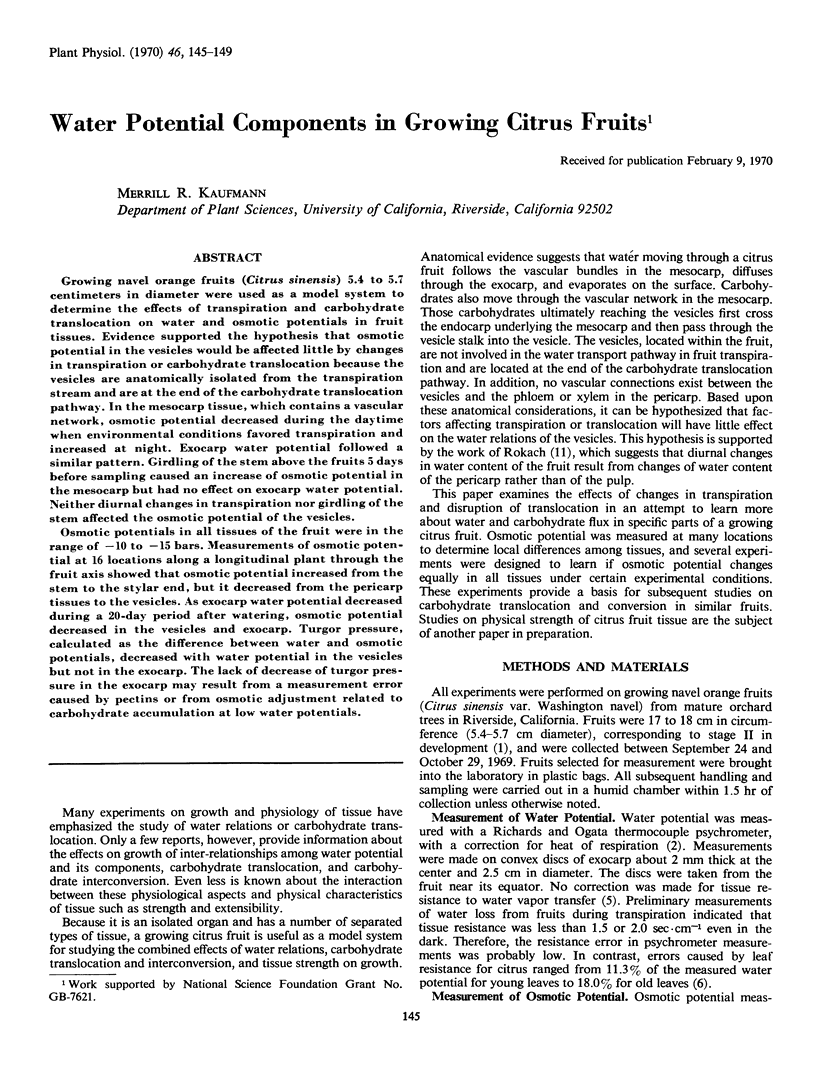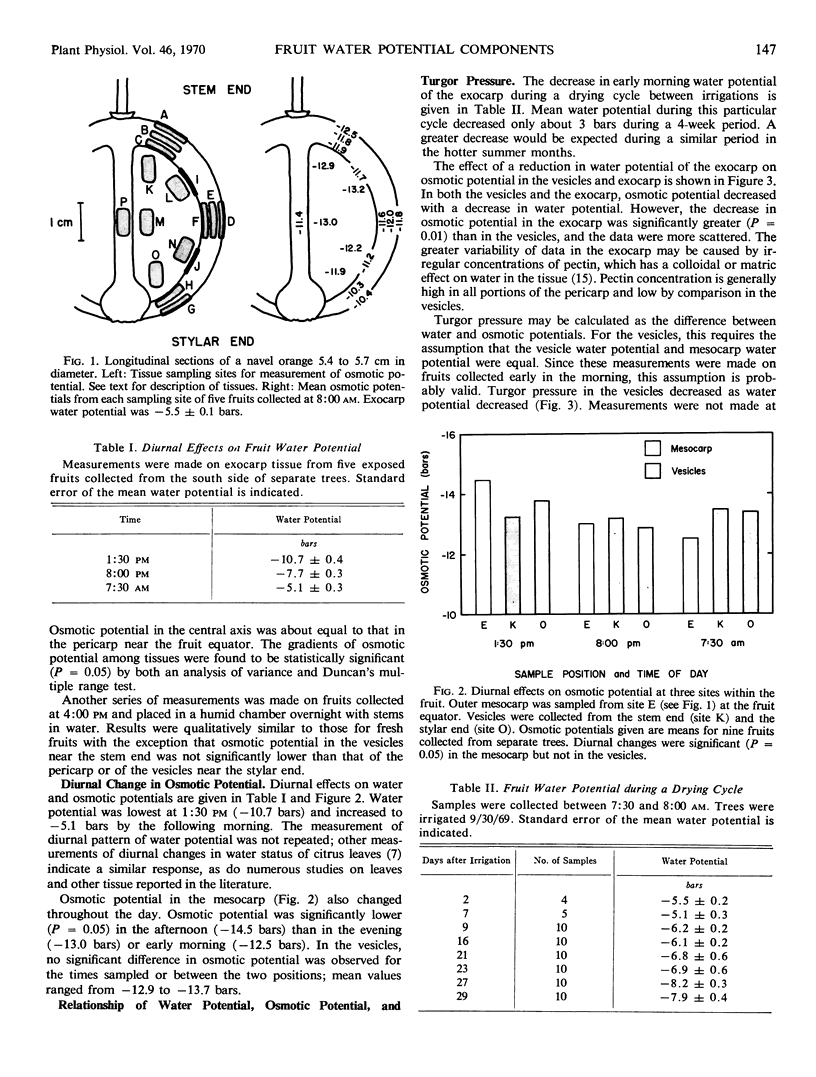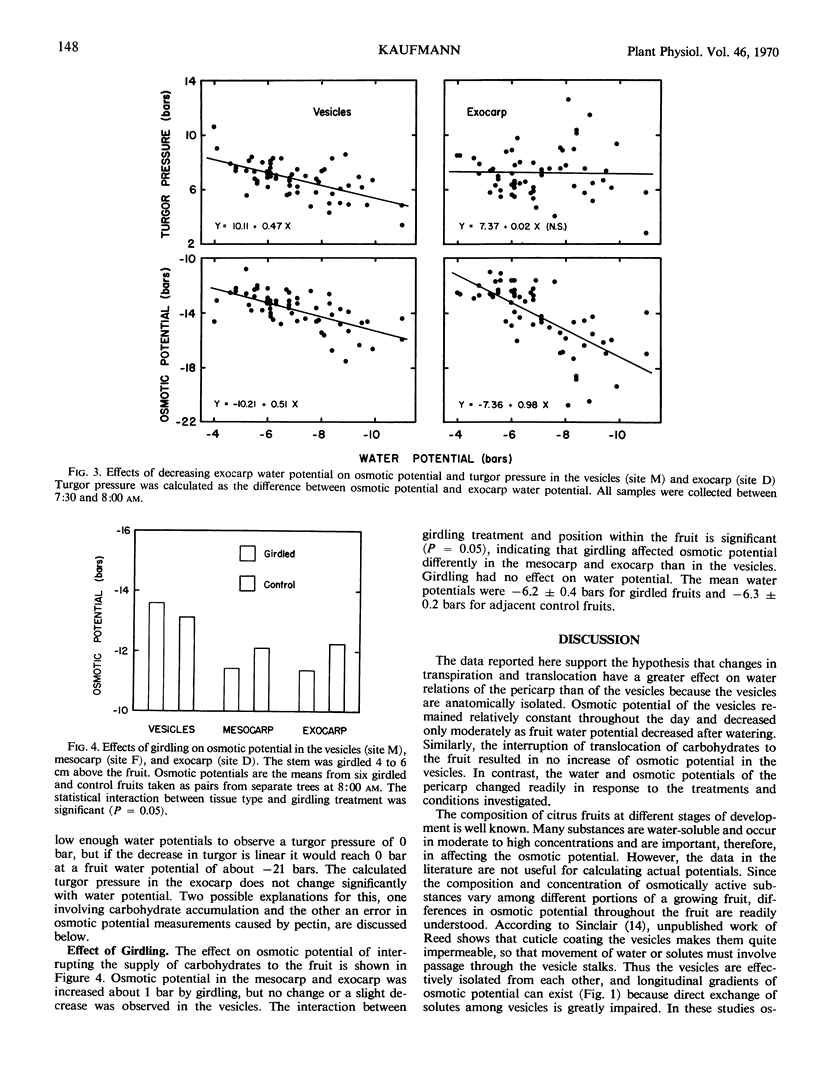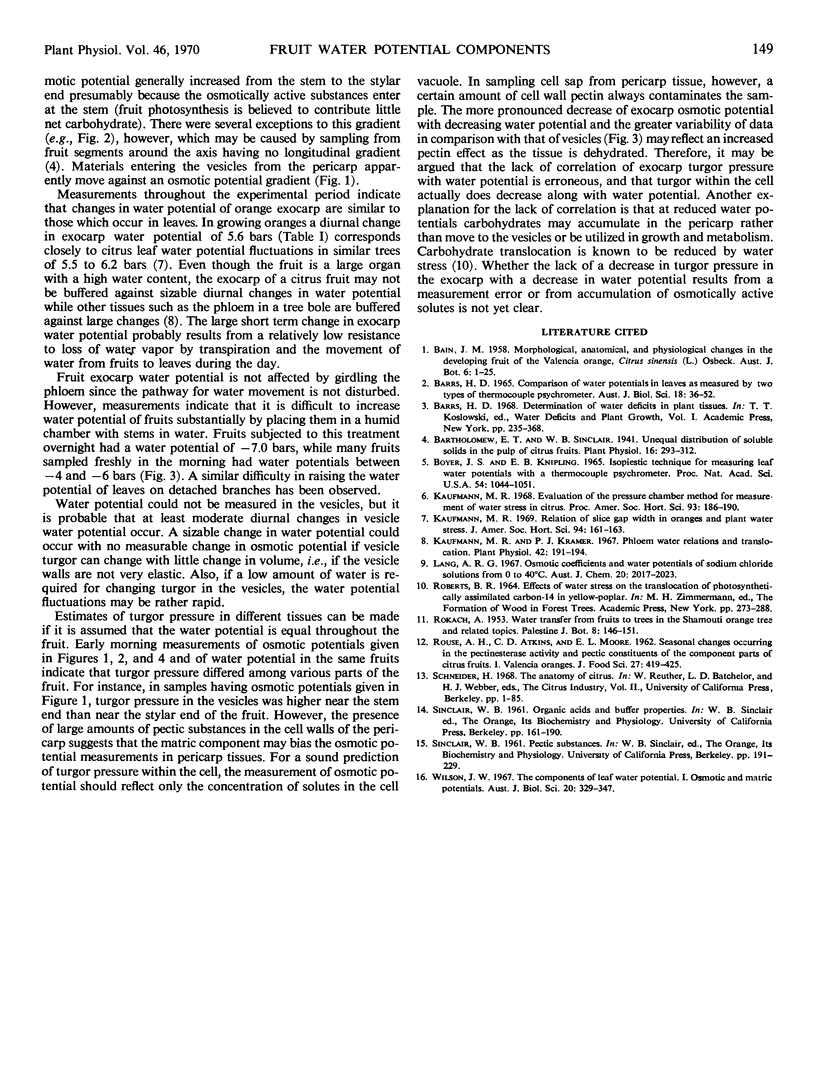Abstract
Growing navel orange fruits (Citrus sinensis) 5.4 to 5.7 centimeters in diameter were used as a model system to determine the effects of transpiration and carbohydrate translocation on water and osmotic potentials in fruit tissues. Evidence supported the hypothesis that osmotic potential in the vesicles would be affected little by changes in transpiration or carbohydrate translocation because the vesicles are anatomically isolated from the transpiration stream and are at the end of the carbohydrate translocation pathway. In the mesocarp tissue, which contains a vascular network, osmotic potential decreased during the daytime when environmental conditions favored transpiration and increased at night. Exocarp water potential followed a similar pattern. Girdling of the stem above the fruits 5 days before sampling caused an increase of osmotic potential in the mesocarp but had no effect on exocarp water potential. Neither diurnal changes in transpiration nor girdling of the stem affected the osmotic potential of the vesicles.
Osmotic potentials in all tissues of the fruit were in the range of −10 to −15 bars. Measurements of osmotic potential at 16 locations along a longitudinal plant through the fruit axis showed that osmotic potential increased from the stem to the stylar end, but it decreased from the pericarp tissues to the vesicles. As exocarp water potential decreased during a 20-day period after watering, osmotic potential decreased in the vesicles and exocarp. Turgor pressure, calculated as the difference between water and osmotic potentials, decreased with water potential in the vesicles but not in the exocarp. The lack of decrease of turgor pressure in the exocarp may result from a measurement error caused by pectins or from osmotic adjustment related to carbohydrate accumulation at low water potentials.
Full text
PDF




Selected References
These references are in PubMed. This may not be the complete list of references from this article.
- Bartholomew E. T., Sinclair W. B. UNEQUAL DISTRIBUTION OF SOLUBLE SOLIDS IN THE PULP OF CITRUS FRUITS. Plant Physiol. 1941 Apr;16(2):293–312. doi: 10.1104/pp.16.2.293. [DOI] [PMC free article] [PubMed] [Google Scholar]
- Kaufmann M. R., Kramer P. J. Phloem water relations and translocation. Plant Physiol. 1967 Feb;42(2):191–194. doi: 10.1104/pp.42.2.191. [DOI] [PMC free article] [PubMed] [Google Scholar]
- Twente J. W., Twente J. A. Regulation of hibernating periods by temperature. Proc Natl Acad Sci U S A. 1965 Oct;54(4):1044–1051. [PMC free article] [PubMed] [Google Scholar]


